In today’s fast-paced world, where time is a luxury and health is a priority, the ground beef and vegetable skillet stands out as a culinary hero. This simple yet flavorful dish combines lean protein with a rainbow of fresh vegetables, all cooked in a single pan for minimal cleanup and maximum satisfaction. Whether you’re a busy parent whipping up a weeknight dinner, a fitness enthusiast seeking balanced meals, or someone exploring budget-friendly recipes, this skillet meal delivers on all fronts. It’s customizable, quick to prepare—often ready in under 30 minutes—and packs a nutritional punch that supports overall well-being.
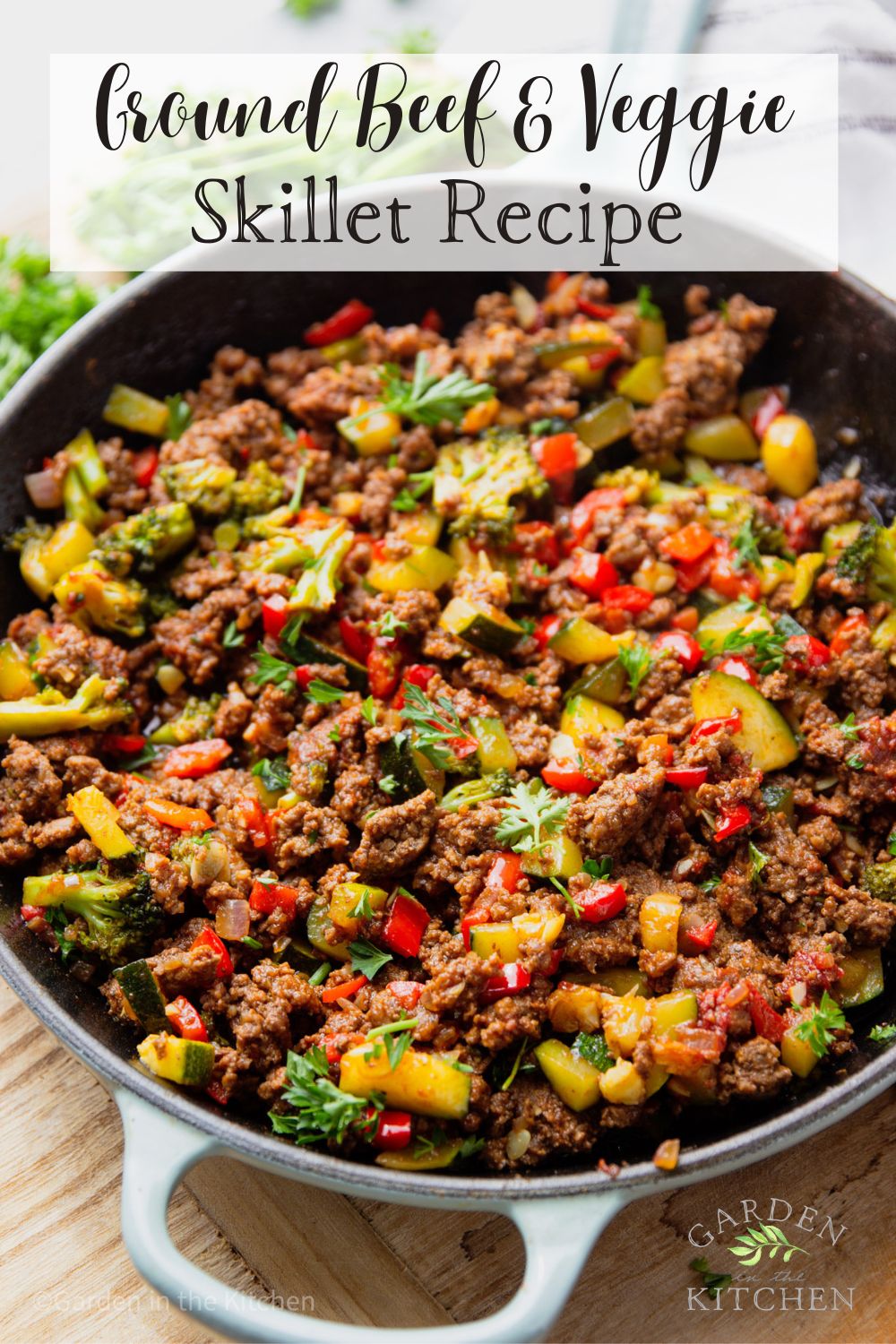
A vibrant ground beef and vegetable skillet ready to serve.
The origins of the ground beef and vegetable skillet can be traced back to traditional American home cooking, evolving from humble skillet hashes and stir-fries popular in the mid-20th century. During the post-World War II era, when convenience foods like Hamburger Helper gained traction, home cooks began experimenting with one-pan meals to stretch ingredients and save time.
This article will guide you through everything you need to know about the ground beef and vegetable skillet. We’ll cover its history in more depth, nutritional benefits, a step-by-step recipe, creative variations, pro tips, serving ideas, and frequently asked questions. By the end, you’ll be equipped to create this dish for your family or feature it on your website as a go-to recipe. Let’s dive in and explore why this skillet meal deserves a spot in your regular rotation.
The Rich History of Skillet Meals: From Humble Beginnings to Modern Staple
Skillet cooking has deep roots in human history, dating back to ancient civilizations where open-fire pans were used to prepare simple, communal meals. In America, the ground beef skillet emerged during the Industrial Revolution when ground meat became more accessible through advancements in butchering and refrigeration. By the 1920s and 1930s, during the Great Depression, economical dishes like beef hashes—combining ground beef with potatoes, onions, and whatever vegetables were available—helped families make the most of limited resources.
Post-war prosperity in the 1950s brought convenience foods, but the 1970s health movement shifted focus to whole ingredients. The ground beef and vegetable skillet as we know it today likely evolved from recipes like “garden skillet supper,” which emphasized fresh produce from home gardens. Influenced by immigrant cuisines, variations incorporated Italian herbs, Mexican spices, or Asian soy-based sauces. For instance, Italian-American communities might add tomato paste and basil, while Southwestern versions include corn and chili powder.
In recent decades, with the rise of one-pan meal trends on platforms like Pinterest and TikTok, this dish has seen a resurgence. Cookbooks from the 1980s onward, such as those by Julia Child or modern authors like Ree Drummond, highlight similar recipes for their simplicity. Forgotten ground beef dishes from the past, like molded beef aspics or vintage casseroles, share DNA with today’s skillet, but the vegetable-forward version stands out for its health appeal. It’s no wonder food historians view it as a bridge between traditional comfort food and contemporary wellness eating.
External Link: For more on the evolution of American beef dishes, check out the https://tastetrove.net.
Internal Link: If you’re interested in similar historical recipes, explore our article on /vintage-casseroles-revived.
Nutritional Benefits: Why This Dish is a Health Powerhouse
One of the standout features of the ground beef and vegetable skillet is its impressive nutritional profile. Lean ground beef provides high-quality protein essential for muscle repair and satiety, while the vegetables add vitamins, minerals, and fiber for digestive health and immune support.
Let’s break it down:
- Protein Power from Beef: A single serving (about 4-6 ounces of cooked ground beef) delivers around 25-30 grams of protein, helping with weight management and energy levels. Opt for 90% lean beef to minimize saturated fat while retaining iron, zinc, and B vitamins crucial for red blood cell production and metabolism.
- Vegetable Vitamins and Fiber: Veggies like bell peppers, zucchini, carrots, and broccoli are rich in vitamin C (for immunity), vitamin A (for vision and skin health), and potassium (for heart function). The fiber content—around 4-6 grams per serving—aids digestion and helps regulate blood sugar, making this dish suitable for diabetics or those on low-carb diets.
- Calorie Balance: A typical portion clocks in at 250-350 calories, with balanced macros: 40% protein, 30% carbs from veggies, and 30% healthy fats. It’s naturally gluten-free, dairy-free, and can be adapted for paleo or keto by skipping starchy veggies.
Studies show that meals combining animal protein with plant-based foods enhance nutrient absorption—for example, the iron in beef is better utilized with vitamin C from peppers. This synergy makes the skillet not just tasty but a smart choice for long-term health.
External Link: Dive deeper into beef nutrition at the National Cattlemen’s Beef Association.
Internal Link: For more healthy meal ideas, visit our /low-carb-recipes section.

Key ingredients for a classic ground beef and vegetable skillet.
Essential Ingredients: Building the Perfect Base
The beauty of this recipe lies in its flexibility, but starting with quality ingredients ensures the best results. Here’s a standard list for 4 servings:
- 1 lb lean ground beef (90% lean recommended)
- 1 medium onion, diced
- 2 cloves garlic, minced
- 1 red bell pepper, chopped
- 1 zucchini, sliced
- 2 carrots, peeled and diced
- 1 cup broccoli florets
- 1 cup frozen corn or peas (optional for sweetness)
- 2 tbsp olive oil or avocado oil
- 1 tsp dried oregano
- 1 tsp paprika
- Salt and black pepper to taste
- 1/2 cup tomato sauce or diced tomatoes (for moisture)
- Fresh herbs like parsley for garnish
These ingredients are affordable and widely available, costing about $10-15 for the whole dish. Choose grass-fed beef for added omega-3s, and organic veggies to minimize pesticides.
Pro Tip: If you’re meal prepping, double the veggies for extra volume without extra calories.
Step-by-Step Instructions: How to Make It
Preparing the ground beef and vegetable skillet is straightforward, even for beginners. Follow these steps for a foolproof result.
- Prep Your Ingredients: Chop all vegetables into bite-sized pieces for even cooking. Mince the garlic and dice the onion. Pat the ground beef dry if needed.
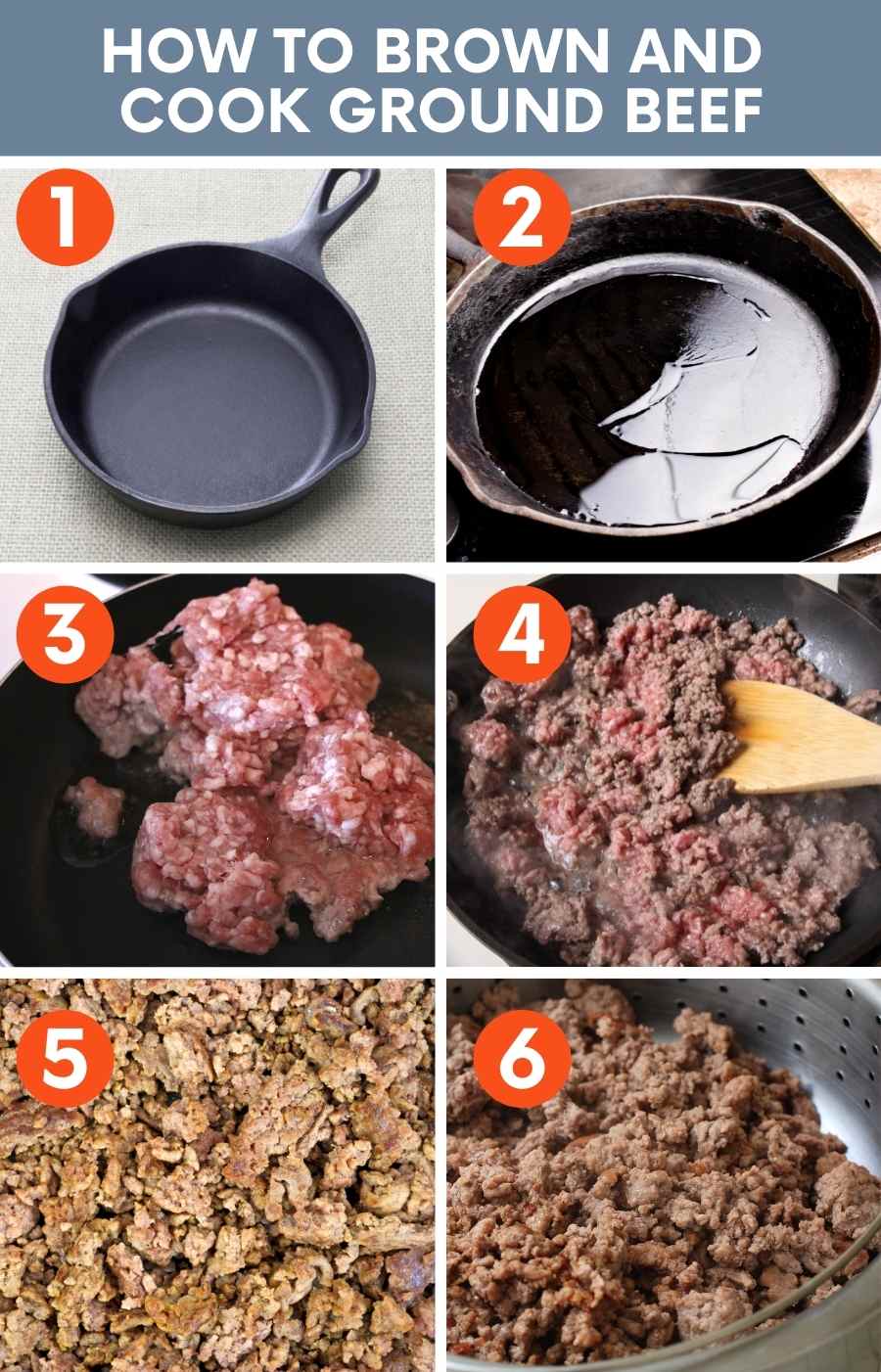
Step 1: Prepping ingredients in the skillet.
- Heat the Skillet: In a large cast-iron or non-stick skillet, heat 1 tbsp oil over medium-high heat. Add the ground beef, breaking it up with a wooden spoon. Cook for 5-7 minutes until browned, seasoning with salt, pepper, oregano, and paprika. Drain excess fat if using fattier beef.
- Add Aromatics: Push the beef to one side and add the remaining oil, onion, and garlic. Sauté for 2-3 minutes until fragrant.
- Incorporate Vegetables: Stir in carrots, bell pepper, zucchini, and broccoli. Cook for 5-8 minutes, stirring occasionally, until veggies soften but remain crisp.
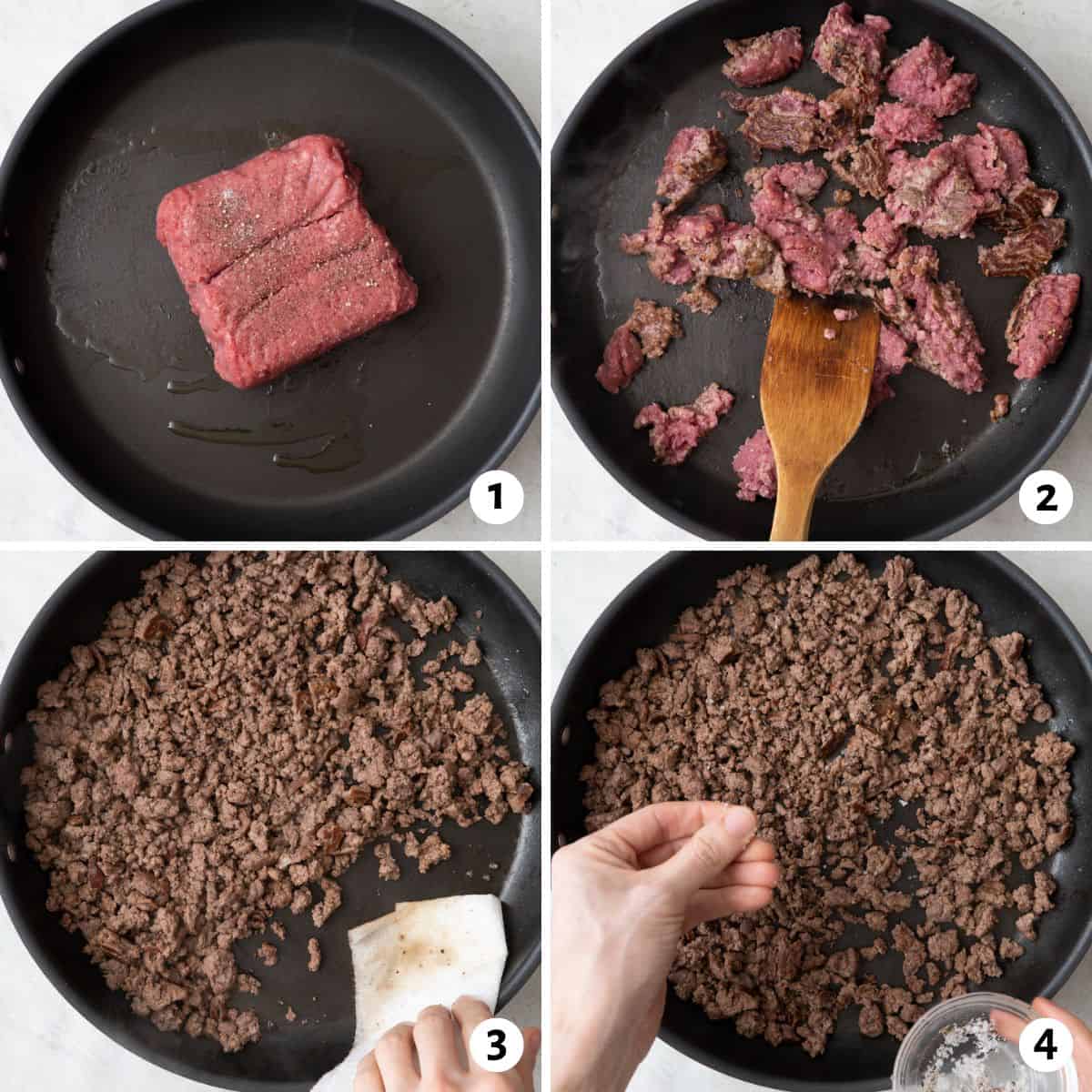
Step 2: Browning the ground beef.
- Simmer with Sauce: Pour in tomato sauce and any optional broth. Reduce heat to medium-low, cover, and simmer for 5 minutes to meld flavors.
- Finish and Serve: Taste and adjust seasonings. Garnish with fresh herbs.
Total time: 25-30 minutes. This method ensures the beef is juicy and veggies retain their nutrients.
External Link: For cast-iron skillet tips, see Lodge Cast Iron’s guide.
Internal Link: Try our /one-pan-chicken-stir-fry for a poultry twist.
Creative Variations: Spice Up Your Skillet
The ground beef and vegetable skillet is endlessly adaptable. Here are some popular twists:
- Mexican-Inspired: Add black beans, corn, cumin, and chili powder. Top with crushed tortilla chips for crunch. Serve with avocado.
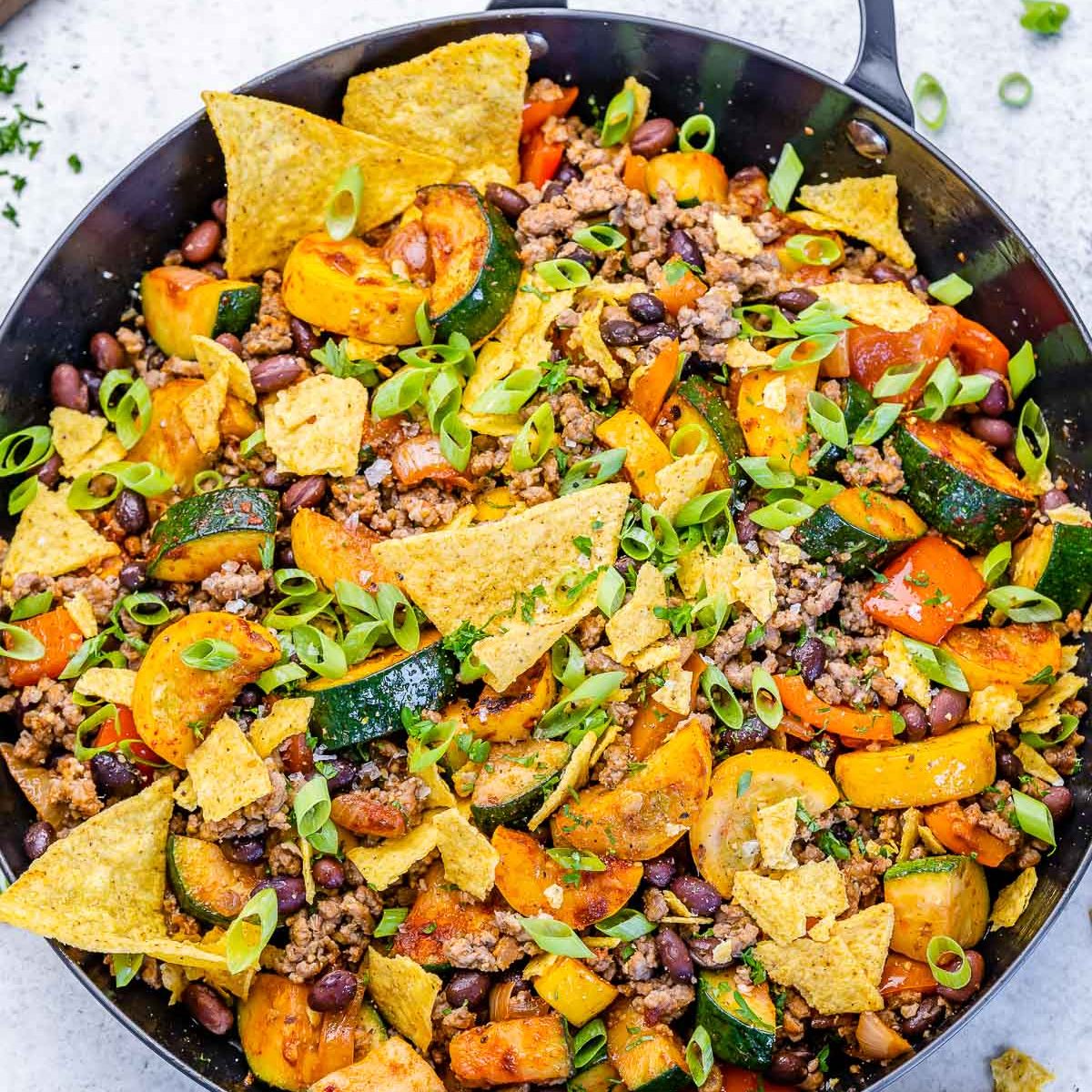
Mexican variation with beans and chips.
- Italian Style: Use tomato paste, basil, and mozzarella. Include eggplant or mushrooms for depth.
- Asian Fusion: Swap oregano for soy sauce, ginger, and sesame oil. Add bok choy or snap peas.
- Mediterranean: Incorporate olives, feta, and artichokes for a tangy kick.
- Low-Carb Keto Version: Skip corn and add more greens like spinach or kale.
These variations keep the dish exciting, allowing you to cater to different tastes or dietary needs.
Pro Tips and Common Mistakes to Avoid
To elevate your skillet game:
- Choose the Right Pan: A 12-inch skillet prevents overcrowding, ensuring even browning.
- Don’t Overcook Veggies: Aim for al dente to preserve nutrients and texture.
- Season Layer by Layer: Add spices to beef first, then taste after adding veggies.
Common pitfalls: Using frozen beef (it steams instead of browns) or skipping drainage (leads to greasy results). Store leftovers in airtight containers for up to 3 days; reheat gently to avoid drying out.
External Link: Learn more cooking techniques at Allrecipes’ basics.
Internal Link: Check our /kitchen-hacks for more tips.
Serving Suggestions and Pairings
Serve the skillet as is for a light meal, or pair it with:
- Quinoa or brown rice for carbs.
- A side salad with vinaigrette.
- Yogurt or sour cream for creaminess.
For entertaining, portion into bowls and let guests customize toppings. It’s family-friendly and scales easily for crowds.
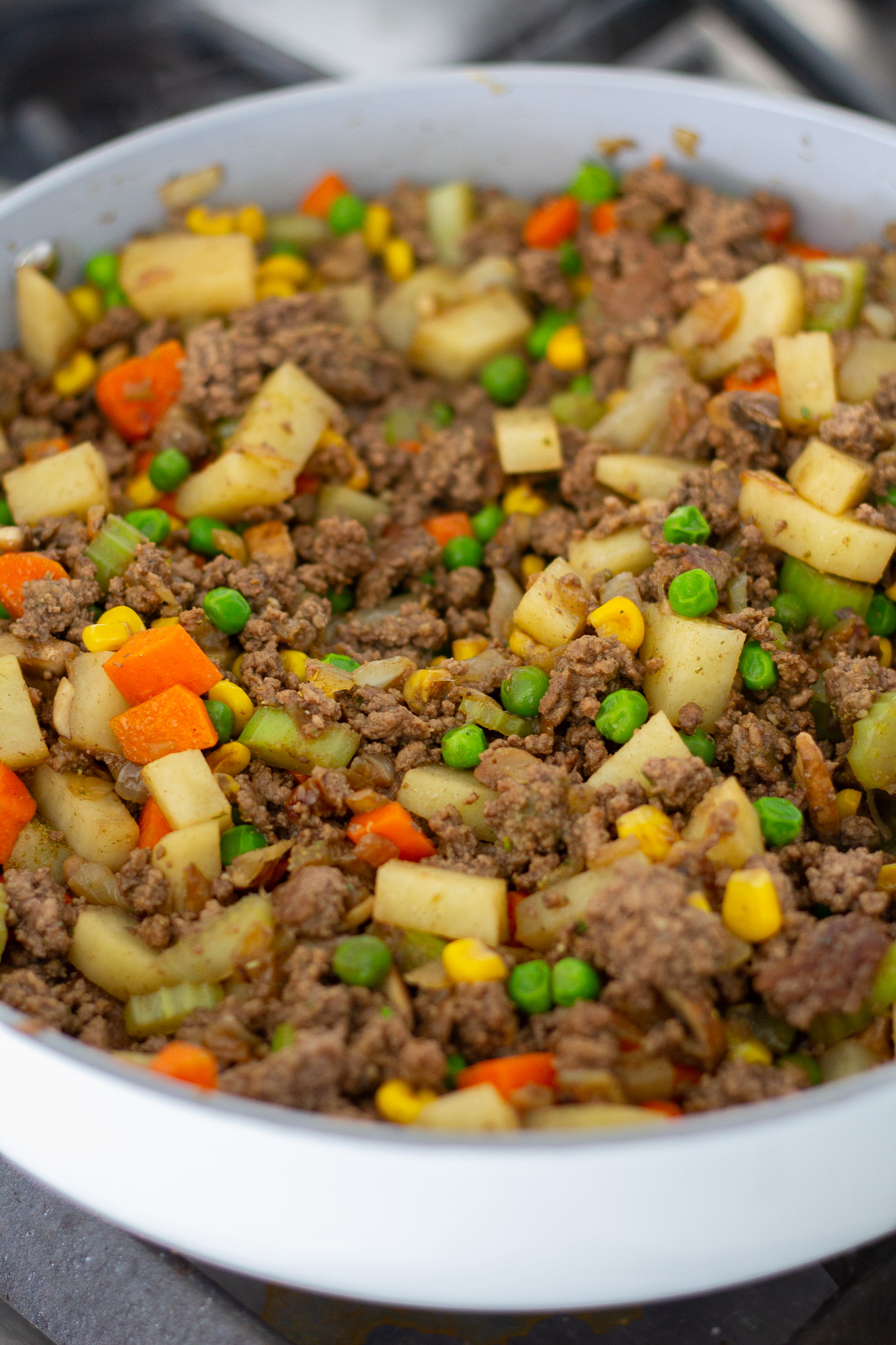
Hearty serving of beef and veggie skillet.
Frequently Asked Questions
Can I use ground turkey instead? Yes, it’s a leaner alternative with similar cooking times.
Is this dish freezer-friendly? Absolutely—cool completely, then freeze for up to 3 months.
How do I make it spicier? Add jalapeños or red pepper flakes during cooking.
What if I have picky eaters? Hide veggies by chopping finely or start with milder ones like carrots.
Embrace the Skillet for Everyday Wins
The ground beef and vegetable skillet is more than a recipe—it’s a lifestyle hack for nutritious, delicious eating without the fuss. From its historical roots in resourceful cooking to its modern role in healthy diets, this dish proves that simplicity can be profound. Experiment with the variations, incorporate the tips, and make it your own. Whether for your website’s recipe collection or your dinner table, it’s bound to become a favorite.